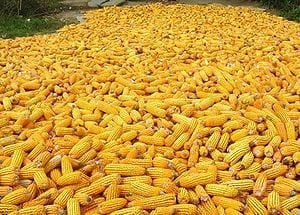
A more diverse cropping landscape would mean viable farms, healthier diets and a steadier food system.
FROM where I sit on the north end of America’s grain belt, I can almost hear the corn popping to the south of me. The drought threatens to drive up global corn prices beyond their level in 2007-8, when food demonstrations broke out around the world. But such crises often lead to change — and transformation is what is needed to make our food system less vulnerable.
We have become dangerously focused on corn in the Midwest (and soybeans, with which it is cultivated in rotation). This limited diversity of crops restricts our diets, degrades our soils and increases our vulnerability to droughts. Farmers in the central plains used to grow a greater diversity of food and forage crops, including oats, hay, alfalfa and sorghum. But they gradually opted to grow more and more corn thanks to federal agricultural subsidies and expanding markets for corn in animal feed, corn syrup and ethanol.
The virtue of corn is that it is one of the most productive crops on the planet, a characteristic that has been greatly amplified by years of research and development. Over time, this cheap and plentiful commodity found more uses and worked its way into more countries.
Cheap corn enabled the proliferation of high fructose corn syrup, an ingredient that is almost impossible to avoid in the American diet today. Farmers also produced less fodder for their own animals as they increasingly purchased relatively inexpensive corn-based feeds. When the cheap price of corn alone could not open up new opportunities, government policies and quotas encouraged the development of corn-based ethanol production and markets, to the point where 40 percent of the corn crop is now devoted to this use.
America’s corn surpluses also drove global market prices so low that many countries found it cheaper to import grain rather than grow their own.
Corn’s weakness is that it is highly susceptible to drought. As an open pollinator, corn has a critical seven-day window (which varies across the Corn Belt depending on planting time) when it really needs sufficient rainfall in order to successfully cross-fertilize with other corn plants. Given this summer’s drought, the worst since the 1950s, it is not surprising that the corn crop has taken a beating. Most estimates suggest that only about a quarter of the crop is in good condition.
The problem is not so much the drought but our over-reliance on this single crop.
via New York Times – WILLIAM G. MOSELEY
The Latest Streaming News: Crop Diversity updated minute-by-minute
Bookmark this page and come back often
Latest NEWS
Latest VIDEO







